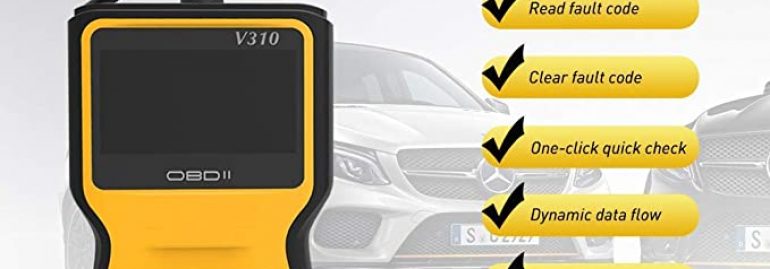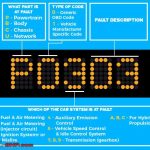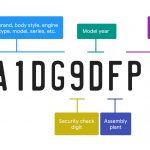If your car’s diagnostic code is P0700, you are not alone. This article explains how to interpret this code and what it means. Learn more about P0700, C0700, and U0700. Then, learn about the B0700 code as well. Here are some common reasons for these codes. Hopefully, this article will help you fix your car. Until next time, happy diagnosing! And if you have any questions, let us know!
P0700
The most common symptoms of a P0700 car diagnostic code are the illumination of the malfunction indicator light, decreased fuel mileage, and difficulty shifting. In addition to these symptoms, your vehicle may exhibit other problems, such as misfiring, dying, and performance issues. To determine whether the transmission is the culprit, you should compare the RPM input speed to the output speed. If this doesn’t reveal any problems, your next step will be to have your vehicle inspected by a mechanic.
The P0700 car diagnostic code usually means that your car’s transmission is malfunctioning. This can be a major problem, affecting drivability. If you see this code, you should not drive your vehicle, as this can cause further damage and even make you a safety hazard on the road. The best thing to do is contact your vehicle’s manufacturer and have it checked by an expert. In many cases, a P0700 can simply be a fluke. However, it’s always better to take your vehicle to a mechanic than wait for it to happen.
Besides the cost of hiring a mechanic, you should also consider the age of your vehicle. Most people purchase a new vehicle every ten years, so if you’ve been driving your car for over a decade, the problem could be minor. If the problem is a small one, consider hiring a mechanic, who can diagnose it safely and accurately. If the issue is severe, however, it’s best to take it to an auto repair shop. This way, you’ll avoid having to pay an arm and a leg for labor.
C0700
The C0700 car diagnostic code is a generic OBD-II trouble code that indicates a malfunction with your vehicle’s power steering system. The mass airflow sensor measures the volume of air entering the engine’s intake manifold and sends that information to the car’s computer, where it is used to control the fuel mixture. When it shows a C0700 code, you should make an appointment with your mechanic.
The first thing to check when your car’s check engine light comes on is the gas cap. Look for any cracks or holes in it. If you can’t find one, you can always buy another one for less than three dollars from an auto parts store. This simple repair will ensure that your vehicle runs at its best performance and is able to avoid costly repairs and other problems. If the problem persists, you can replace the gas cap with an old one that can be replaced for only a few dollars.
The P0700 code is associated with the shift solenoid and indicates a problem with the transmission. The transmission is designed to match the engine’s torque and power to the desired speed. If the difference between the two is greater than the specified value, it’s likely the transmission is slipping. A mechanic can determine if a replacement is necessary by performing the diagnostic test. If this does not fix the problem, it can cause a dangerous road hazard.
U0700
If you see the U0700 car diagnostic code, it probably means something isn’t working properly. Your engine isn’t pumping gas into the car as it should, or the fuel pressure isn’t enough. Your car might also be getting poor gas mileage or have transmission problems. It may even stall at times. There are several symptoms that can come along with this error code, but the key to diagnosing this code accurately is to know what to look for.
First, you should look for a problem that could be causing the U0700 error code. A bad power steering pressure switch could be to blame. A bad PSP signal can cause the car’s engine to run lean or rich, resulting in the U0700 code. The steering wheel must be turned during the Key On, Engine Running Self-Test to test whether or not this error is present. A shorted or open SIG RTN circuit could also cause this problem.
Once you’ve determined that the problem isn’t a specific part of the car, you need to get the code read. While you should have your car checked by a mechanic, it’s always best to try a quick fix first. Another easy way to get the code is to use a scan tool, which will retrieve the information for you. This will save you both time and money. And the good news is that these tools are available at most auto parts stores or local repair shops.
B0700
If you notice that your car’s transmission is giving you the P0700 code, you need to have it checked out. The TCM, or Transmission Control Module, controls and monitors the transmission system. It is an integral part of modern automatic transmissions. A failing TCM can lead to reduced gas mileage, erratic shifting, and even a safety hazard. Fortunately, there are some simple ways to diagnose and repair the problem.
To begin with, check your gas cap. This is one of the first things you should check when the check engine light appears. Look for cracks or other damage. If you suspect the gas cap, you can purchase a new one for less than $3 from your local auto parts store. Once you have removed the old cap, replace it with a new one. The problem may be an oil leak or a cracked gas cap.
Failure of the B0700 Chevrolet Sail test indicates a problem with the engine’s ownstream oxygen sensor, catalytic converter, or MIL lamp. The catalytic converter cleans exhaust after it exits the engine, and the OBDII system monitors it using the ownstream oxygen sensor. When the converter’s efficiency is reduced, it causes the code to be set. This could happen due to ignition misfiring, leaky exhaust valves, or oil burning.
P0133
A ‘P0133’ car diagnostic code means your car is detecting a problem with its oxygen sensor. A dirty mass clogging the airflow sensor can also cause this trouble code. While it is unlikely to harm the engine, improper calibration of the sensor could lead to an inaccurate fuel-air ratio and worsen gas mileage. You should always seek professional advice before replacing the oxygen sensor. RepairPal can provide you with a list of reliable shops in your area. They will also provide you with upfront estimates and a minimum warranty.
If you can’t get the diagnostic software to read the code, you can perform a visual inspection. You can also use a volt ohmmeter or a lab scope to identify the problem. Another way to check the problem is to back-probe the signal wire at the O2 sensor connector and the ECM. Refer to the wiring diagram to find the correct wiring. Check to make sure the sensor has a solid ground. The most common mistake with the oxygen sensor is replacing it with an incorrect one. Another common error is replacing the mass airflow sensor, which cannot be repaired by a mechanic.
Despite the common symptoms of the P0133 car diagnostic code, the problem should be diagnosed as soon as possible. An incorrect air/fuel ratio can lead to excess emissions from the exhaust. Your car will fail emissions tests if it has this code. If you ignore the issue, you may eventually damage your Catalytic Converter and have to pay for an expensive repair. You should always consult a mechanic if you suspect the code is related to the catalytic converter.
P0138
If your car’s Check Engine Light comes on, you might have the troublesome P0138 car diagnostic code. This code signals that there’s an imbalance between fuel and oxygen in your engine. A high voltage at sensor 2 on bank 1 of the engine means that the fuel in your car is rich and not enough oxygen. While it’s a temporary issue, driving with this code may cause damage to the internal engine. Here’s how to repair a P0138 car diagnostic code:
To diagnose a P0138 car diagnostic code, you’ll need specialized equipment. You’ll want an OBD-II scan tool to check all of the DTCs in your car, not just the P0138 code. You can also check the wiring to the oxygen sensor. If it’s not attached properly, it may be causing this code. If you’re unsure of whether your oxygen sensor is the culprit, you can connect it to the rest of the car’s wiring and conduct an odometer test.
A P0138 car diagnostic code can be caused by several problems. The most common one is a contaminated catalytic converter, which tricks the system into thinking the car is running rich. This leads to a spike in the readings on Bank 1 sensor. During the diagnostic process, your mechanic will try to determine what is causing the problem. If you notice a strong exhaust smell while driving, this could be a sign that something is wrong with your catalytic converter.




